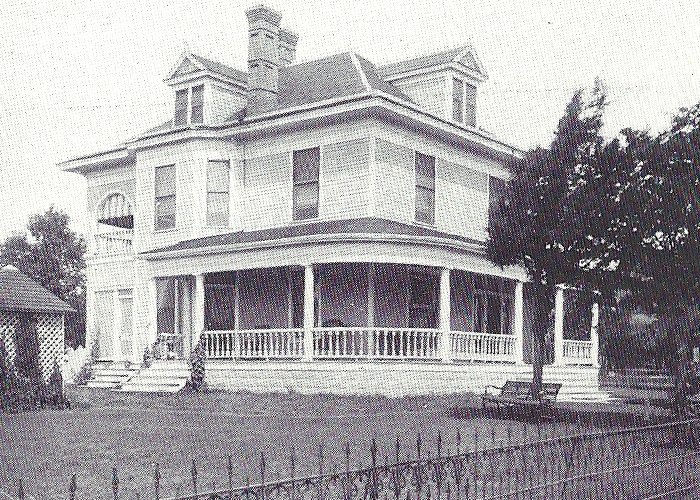



Welcome to the Ennis Heritage Society
The mission of the Ennis Heritage Society is to protect and preserve historic resources that focus on Ennis and East Ellis County for the use, education, and enjoyment of present and future generations.
Our January event is all about Melinda & Her Men: The Story Behind The Historic Moore House in Ennis.
A Brief History of Ennis, Texas
The founding of Ennis was part of the great westward expansion following the Civil War that was aided by the development of steam transportation. In 1872 the Houston and Central Texas Railroad arrived at the spot that then became Ennis, named for Cornelius Ennis, an official of the railroad and mayor of Houston. Between 1874 and the mid-1880s, its population grew from around 300 to 3,000. Many of the settlers came from the war-torn States of the Confederacy and others came from war-ravaged European nations that later became Czechoslovakia.
The city began with just a few buildings east and west of the tracks. Lumberyards, cotton warehouses and other freight sheds lined the tracks and the main commercial center of Ennis took shape on south Main Street and Ennis Avenue. To the south near Main and Lampasas Streets several cotton gins served to process the cotton grown in eastern Ellis County; and at harvest time planters brought their wagons of cotton to town for “Trade Day.” The first commercial firms were dry goods, clothing and pharmaceuticals to supply the basic needs of the new settlers. Business lots sold for around $50, more if with a building. Most early structures were wooden and fire was a constant hazard so the first Ennis Fire Department was started in 1884. The frontier town lacked many public facilities like water, sewage and law enforcement. The new town was full of strangers from various social groups and safety was a prime concern. Several newspaper reports detail numerous shoot-outs when residents had to stay inside and thirteen saloons added to the volatile atmosphere.
Economic growth in the 1890s enabled Ennis to afford more of the basics of a stable community. In 1891 several community leaders led by Joseph Baldridge, Captain Mark Latimer and others, convinced the railroad to locate its Northern Division Headquarters here. Its foundry, machine shop, roundtable and rail yard offered jobs to hundreds of workers who settled in Ennis. Some were former slaves and other farmhands, displaced by mechanization and large-scale agriculture and others were immigrant Czechs recently arrived from abroad. The railroad also led to the expansion of the cotton industry, providing access to foreign and domestic markets through the port of Houston. By 1920, a total of 152,601 bales of cotton were ginned and shipped from Ellis County, the most of any county in America. Railroads and cotton had produced the wealth that could be seen in the residential development of the city. Residents had built beautiful churches of many different denominations and numerous fraternal organizations met regularly to espouse action to strengthen the social fabric. Elegant houses along “the Avenue” and north were accompanied by dozens of Folk Victorian houses and Craftsman style bungalows.
By mid-twentieth century Ennis had become a modern community with schools, three movie theaters, several drugstores, banks and automobile dealerships. The sons and daughters of early settlers had developed new traditions like high school sports, the National Polka Festival and the Ennis Bluebonnet Trail. Moreover the city was connected to the growing metropolis of Dallas to the north by the Interurban Transit line and increasingly better roads. Ennisites were able to experience the best of two worlds, participation in the attractions of a large, dynamic city and the familiar streetscape of a unique, nurturing community.

